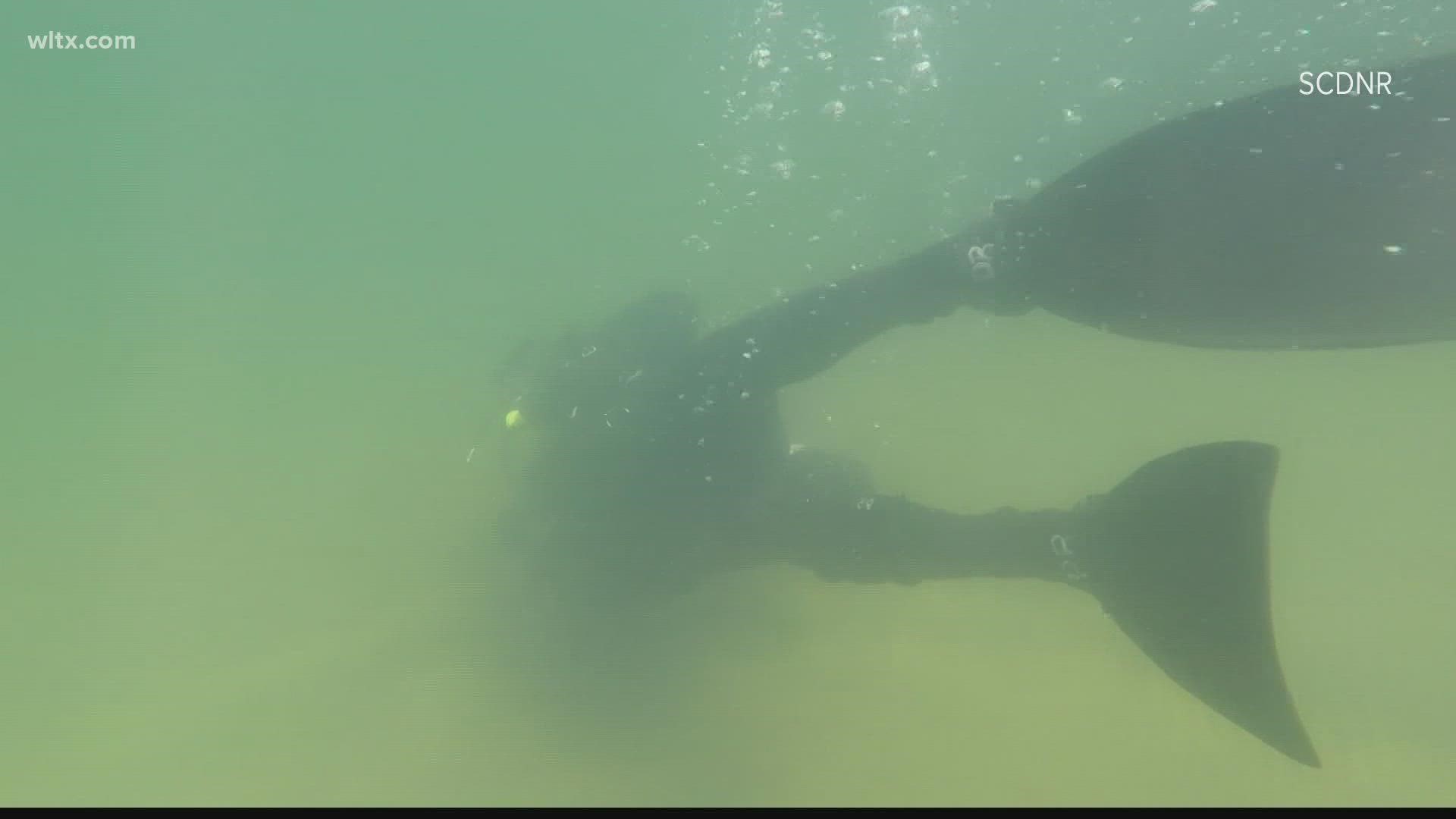LAKE MURRAY SHORES, S.C. — Lake Murray, one of the oldest lakes in the state, sits right in our backyard in Lexington County, covering approximately 50,000 acres of land and 650 miles of shoreline.
Nearly every year there are incidents that happen on these waters, from boating accidents to missing people.
According to data from SCDNR, the agency responded to 40 percent more boating accidents this year compared to last.
They also responded to five deaths on the water this year, compared to four in 2018 and 2020, and one in 2019.
Missing persons cases have also gone up, topping at 133% higher than last year.
This body of water, often a destination for fun on the water, including swimming, fishing and other watersports claims sometimes dangerous waters as well.
That's where the South Carolina Department of Natural Resources comes in.
They work alongside other law enforcement agencies at times, but SCDNR knows every island and every cove. The agency comes full force, communicating across all departments, in the air, under the water, and on top of it.
Right now SCDNR has two pilots. When called for help, the aviation team checks in every 30 minutes, starting their search at 1,000 feet above sea level, conducting a grid search in parallel lines.
Owen Barker is the agency's chief pilot.
"I'm going to fly the area, looking for obstacles to flight and those might be towers, they might be power lines, they might be birds," Barker said. "We can cover so much more area than the boats can. The boats can get out and they can go up and down, they can move around, but we can cover faster and cover it farther and much more effectively."
As for the top of water boat search, SCDNR has 20 officers, each with their own boat manned one or two aboard to look for anything on top, or appearing on their sonar system below.
"The sonar pretty much shows a map of the bottom, so you can pick up anomalies that we can flag for a diver to go down and check while we wait on the dive team to actually arrive," said Hogan Tyler, region 3 law enforcement lieutenant. "From the boat's perspective, you're right there on the water, you're able to notice things that maybe just below the surface or just on top of it."
SCDNR investigators on scene work to interview witnesses and gather evidence. There are seven of them in the state, in addition to the agency's lieutenant and their sergeant, Damian Younge.
"There's different indicators. You have your rub rails on boats that can leave transfer marks and that sort of stuff. You have props that can leave prop marks as well. Those are the evidence that we're photographing as well as taking samples of if need be," Youngue said.
Investigators also keep the families informed. Yongue explains he can't help but put himself in their shoes.
"It can get very emotional. It's very difficult to do, because you have loved ones as well," Youngue said.
Lastly, the SCDNR dive team has 20 divers, holding the title as the third oldest team in the nation.
Dwayne Rogers is the Dive Team Sergeant.
"We always try to have three divers on scene. Obviously we've got to have a supervisor, we've got to have a safety diver and an actual diver. But usually we'll have anywhere from four to six and sometimes if it's a big dive where it's going to be multiple days, we'll do a rotation," Rogers said.
Their swim pattern is also in grid form. The team's limit is 125 feet, which is right around the deepest point of Lake Murray.
Rogers tells News 19 it takes a very specific kind of person to do this job in these conditions.
"The dark, they get claustrophobic, possible entanglements and obviously, finding possibly a deceased person. You find a victim and a lot of times, if it's a couple days after the incident, there's no telling what kind of shape you're going to find these people in, so it takes a different kind of mindset. So I think the dive team's a vital part of what we do," Rogers said.
Each branch works together for a common goal: To save lives, to work fast but efficiently, to serve and to never give up.
According to SCDNR, during holidays and other large gatherings and events, they have EMS personnel staged at Lake Murray ready in case of any emergencies.

